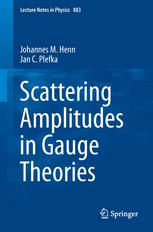

Most ebook files are in PDF format, so you can easily read them using various software such as Foxit Reader or directly on the Google Chrome browser.
Some ebook files are released by publishers in other formats such as .awz, .mobi, .epub, .fb2, etc. You may need to install specific software to read these formats on mobile/PC, such as Calibre.
Please read the tutorial at this link: https://ebookbell.com/faq
We offer FREE conversion to the popular formats you request; however, this may take some time. Therefore, right after payment, please email us, and we will try to provide the service as quickly as possible.
For some exceptional file formats or broken links (if any), please refrain from opening any disputes. Instead, email us first, and we will try to assist within a maximum of 6 hours.
EbookBell Team

4.1
100 reviewsAt the fundamental level, the interactions of elementary particles are described by quantum gauge field theory. The quantitative implications of these interactions are captured by scattering amplitudes, traditionally computed using Feynman diagrams. In the past decade tremendous progress has been made in our understanding of and computational abilities with regard to scattering amplitudes in gauge theories, going beyond the traditional textbook approach. These advances build upon on-shell methods that focus on the analytic structure of the amplitudes, as well as on their recently discovered hidden symmetries. In fact, when expressed in suitable variables the amplitudes are much simpler than anticipated and hidden patterns emerge.
These modern methods are of increasing importance in phenomenological applications arising from the need for high-precision predictions for the experiments carried out at the Large Hadron Collider, as well as in foundational mathematical physics studies on the S-matrix in quantum field theory.
Bridging the gap between introductory courses on quantum field theory and state-of-the-art research, these concise yet self-contained and course-tested lecture notes are well-suited for a one-semester graduate level course or as a self-study guide for anyone interested in fundamental aspects of quantum field theory and its applications.
The numerous exercises and solutions included will help readers to embrace and apply the material presented in the main text.